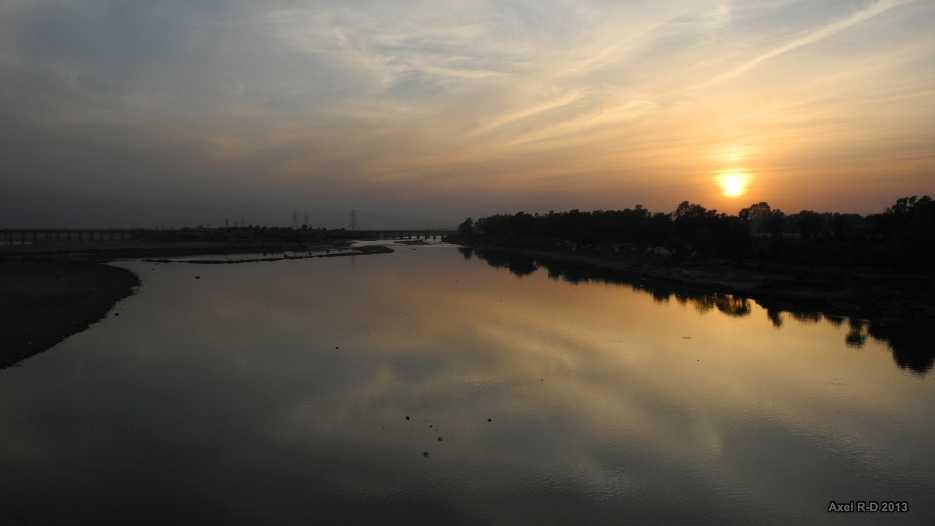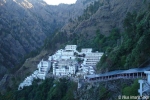"City of Temples"
Jammu Tourism
Be it the multi-hued flags representing the temples and shrines in the city, the tantalizing aromas that lift and diffuse from its spectacular cuisine or even the snow capped mountains that promise adventure and action, this 'City of Temples' has something to offer to everyone.
A land of grand ancient temples and beautiful palaces, Jammu is the winter capital of the state of Jammu and Kashmir. Nestled against the backdrop of the snow-capped Pir Panjal Mountains, the region of Jammu constitutes the southernmost unit of the state of Jammu & Kashmir. It forms part of the transition between the Himalayan range in the north and the dusty plains of Punjab in the south. Between these two extremities lie a series of scrub-covered hills, forested mountain ranges and river valleys, encompassing several microclimatic regions that extend from Kishtawar in the north-east to Akhnoor in the south-west, and the historic town of Poonch in the north-west to the borders ofKangra(Himachal Pradesh) in the south-east. The Shivalik hills cut across the area from the east to the west while the rivers Ravi, Tawi and Chenab cut their way through the region.
Download Jammu PDF Guide >
What's Great?
Well-connected and easily accessible from all the major cities of the country. Can be visited throughout the year.
What's not so Great?
Slightly overcrowded during the peak winter season.
For Whom
Ideal for couple/family vacations as well as adventure enthusiasts. One of the preferred destinations in Jammu & Kashmir, famous for its scenic beauty.
The Duggar land of Jammu
The Duggar Land of Jammu is a magnificent abode of temples, palaces, hills and mountain ranges. Located near the range of Pir-Panjal mountain ranges and blessed with Ravi, Tawi and Chenab rivers, Jammu is another piece of scenic beauty in the paradise state of Jammu and Kashmir. Jammu stands tall and majestic as a cultural hub of intermixing traditions. The Dogra culture shares its existence with the states of Himachal Pradesh and Punjab. The year is marked with various festivals, celebrations and merriment. Jammu is a hotspot for tourists of all kinds throughout the year. It?s an absolute delight for people of all age brackets. The winter capital?s landscape is dotted with Temples, Mahals and Palaces of various kinds.
Shopping in Jammu
Jammu is famous for handicrafts, handlooms and dry fruits. One of the most popular markets in Jammu is Raghunath Bazaar and is based right next to Raghunath mandir. Besides dry fruits, Chocolate barfi and Sund panjeeri are the most sold delicacies in Jammu. Pahalwan di Hatti and Amritsar di Hatti are two famous shops to buy the sweets from. A little distance further is Gole Market in Gandhi Nagar, where you can shop modern amenities and electronic gadgets. Hari Market, Poshish, Raghunath Bazaar, Jain Bazaar, Boota Ram market are some of the other popular bazaars of Jammu.
History of Jammu
Jammu was founded by Raja Jambu Lochan in 14th century, when he constructed Bahu fort on the banks of river Tawi. There also have been excavations found 32 km away from Jammu, in the city of Akhnoor which suggest that Jammu was once a part of Harappan Civilization as well. Remains from Maurya and Gupta dynasties have been found, followed by the invasions by Mughals and Sikhs. The Dogra rule brought back the glory to the city. After the partition of India, Jammu continued to be the official winter capital of the state.
Itinerary
Day 1-Reach Jammu by morning. You can head towards the city area. Visit the majestic Raghunath Temple to witness one of the finest works of architecture. You can also shop at the local Raghunath market. For connoisseurs of art, visiting the Mubarak Mandi Palace is a must. Later, you can head towards Dera Baba Banda.Day 2-You can visit the Bahu Fort and the surroundings gardens. The area is in itself a picnic hotspot among tourists as well as localities.The Bagh-e-Bahu or Bahu gardens are another refreshing stop. Visit the Bahu Aquarium, one of the largest underground aquariums of the subcontinent. You can later refresh and shop at the Gole Market area of Jammu City.
If you are an adventure enthusiast, you can head towards Patni Top, 112km away from Jammu. A relatively lesser-known destination, Patni Top is a boon for adventure enthusiasts, ideal for Trekking, snowboarding, Skiing and Aero-sports. The Mansar or Mansarovar Lake, 20km from Jammu is another holy pilgrimage.
Sep-Maris the best time to visit Jammu
The best time to visit Jammu is between late September and early March. Summers in Jammu can result in the temperature rise of up to 45-48 degrees Celsius. Winters and spring are the ideal time to visit. You can also visit Jammu during the famous festivals like Makara Sankranti (January), Ram Navami (March) and Deepavali (October) when the whole town gets dressed up like a queen and drenched in the festivities.
Weather in Jammu
Loading...
Jammu in Summer (April - June)
The summer months are comparatively less preferred to visit Jammu. However, if you wish to avoid touristy crowds and congestion, you can visit during this time.
Jammu in Monsoon (July - September)
Monsoon showers are quite favourable to the geography of Jammu. This is the second best time to visit Jammu. The showers bring alive lush green scenic landscapes and transform the valleys.
Jammu in Winter (October - March)
Winters in Jammu are the perfect season to visit this paradise. The snow covered mountains and lush landscape add to the beauty of the place. A lot of areas like Patni Top receive snowfall during this period.
Monthly Weather in Jammu
Month
Avg. Minimum (°C)
Avg. Maximum (°C)
January
8
17
February
10
23
March
13
27
April
19
35
May
24
38
June
24
38
July
25
34
August
25
33
September
24
34
October
18
32
November
12
26
December
8
22
Comments on Jammu
Post Your Comment


 Bahu Fort
Bahu Fort Mubarak Mandi Palace
Mubarak Mandi Palace Mansar Lake
Mansar Lake Raghunath Temple
Raghunath Temple Vaishno Devi
Vaishno Devi Mcleodganj
Mcleodganj Dalhousie
Dalhousie Khajjiar
Khajjiar Patnitop
Patnitop Srinagar
Srinagar